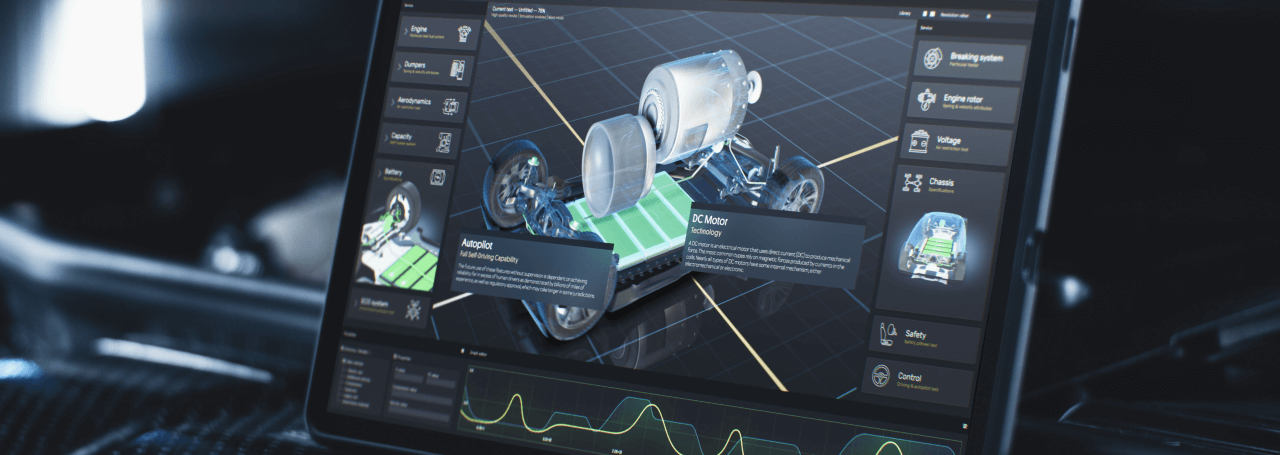- 1. Understanding the Working Mechanism of Twisted Nematic Panels
- Key Advantages of Using Twisted Nematic (TN) Panels
- 3. Potential Limitations and Drawbacks of TN Panels
- 4. Comparing TN Panels with Other Display Technologies
- 5. Ideal Use Cases and Applications of Twisted Nematic Panels
- 6. Future Trends and Developments in TN Panel Technology
- Frequently Asked Questions
Welcome to a comprehensive exploration of Twisted Nematic (TN) Panels, a popular type of liquid crystal display (LCD) technology. As an expert in display technologies, I’m excited to guide you through the fascinating world of TN Panels, shedding light on their unique operating principles, notable advantages, and potential drawbacks.
We’ll delve into the nuts and bolts of how these panels function, offering a clear understanding of their working mechanism. We’ll also discuss the key benefits that make TN Panels a preferred choice for certain applications, while also acknowledging their limitations.
In an effort to provide a balanced perspective, we’ll compare TN Panels with other prevalent display technologies, highlighting their distinctive features and performance attributes. We’ll also explore the ideal scenarios and applications where TN Panels truly shine, offering practical insights for potential users.
Finally, we’ll gaze into the future, discussing emerging trends and potential advancements in TN Panel technology. This article is designed to be an engaging and informative journey, whether you’re a tech enthusiast, a professional in the field, or simply curious about the technology that powers your everyday screens. So, let’s dive in and untwist the mysteries of Twisted Nematic Panels together.
1. Understanding the Working Mechanism of Twisted Nematic Panels
The core functionality of Twisted Nematic (TN) panels lies in their unique structure. These panels consist of a liquid crystal layer sandwiched between two polarizing filters. The liquid crystal molecules are twisted at a 90-degree angle, hence the name ‘Twisted Nematic’. When an electric field is applied, these molecules untwist to varying degrees, depending on the voltage. This untwisting alters the orientation of the light passing through, controlling the amount of light that reaches the second polarizing filter.
Key features of the working mechanism of TN panels include:
- Fast response times: TN panels are known for their incredibly fast response times, which is the time it takes for a pixel to change from one color to another. This makes them an excellent choice for fast-paced gaming.
- High refresh rates: TN panels can support high refresh rates, which is the number of times the screen updates with new images each second. This contributes to smoother motion on the screen.
- Low production cost: The technology used in TN panels is relatively simple and inexpensive to produce, making TN panels a cost-effective choice.
However, it’s important to note that the performance of TN panels can be affected by viewing angles. The colors may appear distorted or inverted when viewed from an angle, which is a significant limitation of this technology.
Key Advantages of Using Twisted Nematic (TN) Panels
Among the various types of display technologies available today, Twisted Nematic (TN) panels stand out due to their high performance and affordability. These panels are particularly favored in the gaming community, as they offer fast response times and high refresh rates. This means that images refresh quickly, reducing ghosting or blurring effects that can occur in fast-paced games. Furthermore, TN panels consume less power compared to other panel types, making them a more energy-efficient choice.
Another significant advantage of TN panels is their superior brightness. This makes them an excellent choice for use in brightly lit environments where other panel types might struggle. Additionally, TN panels are capable of offering high resolutions, further enhancing the viewing experience. However, it’s worth noting that while TN panels excel in terms of speed and brightness, they may not offer the same level of color accuracy and viewing angles as other panel types like IPS or VA.
In conclusion, Twisted Nematic (TN) panels offer several key advantages, including fast response times, high refresh rates, superior brightness, and energy efficiency. These benefits make them a popular choice among gamers and those seeking a high-performance display on a budget. However, potential users should also be aware of their limitations, such as reduced color accuracy and viewing angles, to make an informed decision.
3. Potential Limitations and Drawbacks of TN Panels
While Twisted Nematic (TN) panels are renowned for their high refresh rates and swift response times, they are not without their drawbacks. One of the most significant limitations is the relatively poor color reproduction and contrast ratio compared to other panel types such as In-Plane Switching (IPS) and Vertical Alignment (VA) panels. This can result in less vibrant and accurate colors, which may not be ideal for graphic designers, photographers, and other professionals who require precise color accuracy.
Another potential limitation of TN panels is their narrow viewing angles. Unlike IPS and VA panels, which typically offer wide viewing angles, the image quality on a TN panel can degrade significantly when viewed from an angle. This can lead to color shifting and loss of detail, which can be particularly problematic for users who need to share their screen with others or work in multi-monitor setups. Tip: For optimal viewing, it’s recommended to view TN panels directly in front.
Lastly, TN panels are generally not as well-suited for high-end gaming or professional applications as other panel types. While they offer fast response times and high refresh rates, they lack the color accuracy, contrast ratio, and viewing angles of IPS and VA panels. Therefore, while TN panels can be a good choice for casual gaming and general use, they may not be the best option for more demanding applications. Remember: Always consider your specific needs and requirements when choosing a panel type.
4. Comparing TN Panels with Other Display Technologies
In the realm of display technologies, Twisted Nematic (TN) panels hold a unique position. They are often compared with other popular technologies such as In-Plane Switching (IPS) and Vertical Alignment (VA) panels. Here’s a brief comparison:
- Speed: TN panels are known for their fast response times, making them a preferred choice for gamers and professionals who require high-speed displays. On the other hand, IPS and VA panels may not offer the same speed.
- Color Accuracy: While TN panels offer decent color reproduction, they are often outperformed by IPS panels, which are known for their superior color accuracy and wider viewing angles. VA panels also tend to have better color reproduction than TN panels.
- Viewing Angles: TN panels have narrower viewing angles compared to IPS and VA panels. This means the display quality on a TN panel can degrade when viewed from extreme angles.
- Cost: One of the major advantages of TN panels is their cost-effectiveness. They are generally cheaper than IPS and VA panels, making them a popular choice for budget-conscious consumers.
5. Ideal Use Cases and Applications of Twisted Nematic Panels
From gaming to professional environments, Twisted Nematic (TN) panels have carved out a significant niche. Their fast response times and high refresh rates make them an ideal choice for competitive gaming where every millisecond counts. For instance, the ASUS VG248QE, a popular gaming monitor, utilizes a TN panel to achieve a 1ms response time and a 144Hz refresh rate. However, these panels are not just confined to the gaming world. Many businesses opt for TN panels due to their affordability and adequate performance for general computing tasks. Let’s compare TN panels with other popular panel types:
| Panel Type | Response Time | Color Accuracy | Viewing Angles |
|---|---|---|---|
| Twisted Nematic (TN) | 1ms | Mediocre | Poor |
| In-Plane Switching (IPS) | 4ms | Excellent | Wide |
| Vertical Alignment (VA) | 2ms | Good | Decent |
As seen in the table, while TN panels may not offer the best color accuracy or viewing angles, their superior response times and cost-effectiveness make them a viable choice for specific use cases.
6. Future Trends and Developments in TN Panel Technology
As we look ahead, the evolution of TN panel technology is set to be influenced by several key trends. Firstly, the demand for higher resolution displays is pushing manufacturers to develop TN panels with greater pixel density. This is expected to result in sharper images and more vibrant colors, enhancing the overall visual experience for users. Secondly, there is a growing trend towards more energy-efficient technology. Manufacturers are therefore focusing on improving the power consumption rates of TN panels, which could lead to longer battery life for devices that use these panels.
Another significant trend is the increasing demand for flexible and curved displays. This is driving innovation in the design and manufacturing of TN panels, with the aim of creating panels that can be bent or curved without compromising on image quality or performance. This could open up new possibilities for the design of electronic devices, from smartphones to wearable tech. Furthermore, the rise of virtual and augmented reality technologies is likely to impact the development of TN panels, as these technologies require high-performance displays that can deliver immersive visual experiences.
Despite these exciting developments, it’s important to be aware of the potential limitations and challenges. For instance, while TN panels offer fast response times and high refresh rates, they generally have lower color accuracy and viewing angles compared to other types of panels such as IPS or VA. This could limit their suitability for certain applications, such as graphic design or professional photography. However, ongoing research and development efforts are aimed at overcoming these limitations, and we can expect to see continued improvements in the performance and capabilities of TN panels in the future.
Frequently Asked Questions
What makes TN panels different from other display technologies?
Twisted Nematic (TN) panels are unique due to their fast response times and high refresh rates, which make them ideal for gaming. They are also more affordable compared to other display technologies. However, they do have limitations, such as narrower viewing angles and less accurate color reproduction compared to IPS or VA panels.
Are TN panels suitable for professional graphic design or video editing?
While TN panels offer fast response times and high refresh rates, they are not typically the best choice for professional graphic design or video editing. This is due to their limited color accuracy and narrower viewing angles compared to other panel types like IPS or VA. Professionals in these fields usually prefer monitors with more accurate color reproduction.
What are the latest advancements in TN panel technology?
The latest advancements in TN panel technology are focused on improving color accuracy and viewing angles. Manufacturers are also working on increasing the resolution and size of TN panels. However, the main advantage of TN panels remains their fast response times and high refresh rates.
What are the best settings to use for a TN panel?
The best settings for a TN panel depend on the specific use case. For gaming, it’s recommended to use the highest refresh rate and response time settings. For general use, adjusting the contrast and brightness to comfortable levels is usually sufficient. It’s also recommended to view the panel straight on, as viewing angles can affect the display quality.
Can TN panels be used for 3D displays?
Yes, TN panels can be used for 3D displays. In fact, their fast response times make them a good choice for 3D applications. However, the quality of the 3D effect can be affected by the panel’s viewing angles and color accuracy.
DISCOVER OUR
Whitepaper
Achieve the perfect user-display interaction with the right Touch Sensor IC. Ever faced issues with phantom touch events or certification? Boost your R&D like a pro with our Whitepaper!



